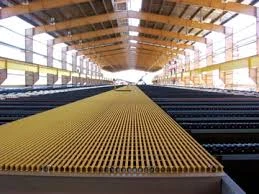
-
 Afrikaans
Afrikaans -
 Albanian
Albanian -
 Amharic
Amharic -
 Arabic
Arabic -
 Armenian
Armenian -
 Azerbaijani
Azerbaijani -
 Basque
Basque -
 Belarusian
Belarusian -
 Bengali
Bengali -
 Bosnian
Bosnian -
 Bulgarian
Bulgarian -
 Catalan
Catalan -
 Cebuano
Cebuano -
 China
China -
 China (Taiwan)
China (Taiwan) -
 Corsican
Corsican -
 Croatian
Croatian -
 Czech
Czech -
 Danish
Danish -
 Dutch
Dutch -
 English
English -
 Esperanto
Esperanto -
 Estonian
Estonian -
 Finnish
Finnish -
 French
French -
 Frisian
Frisian -
 Galician
Galician -
 Georgian
Georgian -
 German
German -
 Greek
Greek -
 Gujarati
Gujarati -
 Haitian Creole
Haitian Creole -
 hausa
hausa -
 hawaiian
hawaiian -
 Hebrew
Hebrew -
 Hindi
Hindi -
 Miao
Miao -
 Hungarian
Hungarian -
 Icelandic
Icelandic -
 igbo
igbo -
 Indonesian
Indonesian -
 irish
irish -
 Italian
Italian -
 Japanese
Japanese -
 Javanese
Javanese -
 Kannada
Kannada -
 kazakh
kazakh -
 Khmer
Khmer -
 Rwandese
Rwandese -
 Korean
Korean -
 Kurdish
Kurdish -
 Kyrgyz
Kyrgyz -
 Lao
Lao -
 Latin
Latin -
 Latvian
Latvian -
 Lithuanian
Lithuanian -
 Luxembourgish
Luxembourgish -
 Macedonian
Macedonian -
 Malgashi
Malgashi -
 Malay
Malay -
 Malayalam
Malayalam -
 Maltese
Maltese -
 Maori
Maori -
 Marathi
Marathi -
 Mongolian
Mongolian -
 Myanmar
Myanmar -
 Nepali
Nepali -
 Norwegian
Norwegian -
 Norwegian
Norwegian -
 Occitan
Occitan -
 Pashto
Pashto -
 Persian
Persian -
 Polish
Polish -
 Portuguese
Portuguese -
 Punjabi
Punjabi -
 Romanian
Romanian -
 Russian
Russian -
 Samoan
Samoan -
 Scottish Gaelic
Scottish Gaelic -
 Serbian
Serbian -
 Sesotho
Sesotho -
 Shona
Shona -
 Sindhi
Sindhi -
 Sinhala
Sinhala -
 Slovak
Slovak -
 Slovenian
Slovenian -
 Somali
Somali -
 Spanish
Spanish -
 Sundanese
Sundanese -
 Swahili
Swahili -
 Swedish
Swedish -
 Tagalog
Tagalog -
 Tajik
Tajik -
 Tamil
Tamil -
 Tatar
Tatar -
 Telugu
Telugu -
 Thai
Thai -
 Turkish
Turkish -
 Turkmen
Turkmen -
 Ukrainian
Ukrainian -
 Urdu
Urdu -
 Uighur
Uighur -
 Uzbek
Uzbek -
 Vietnamese
Vietnamese -
 Welsh
Welsh -
 Bantu
Bantu -
 Yiddish
Yiddish -
 Yoruba
Yoruba -
 Zulu
Zulu
grp chemical tank
The Importance of Chemical Tanks Focus on GRP Technology
In today's industrial landscape, the safe and efficient storage of chemicals is paramount. Among the various materials and technologies available for chemical storage, Glass Reinforced Plastic (GRP) tanks have gained significant attention due to their unique advantages. GRP chemical tanks are increasingly used across various sectors including chemical manufacturing, wastewater treatment, and pharmaceuticals, thanks to their exceptional durability, corrosion resistance, and cost-effectiveness.
What is GRP?
Glass Reinforced Plastic, also known as fiberglass, is a composite material made by embedding glass fibers within a polymer matrix. This combination results in a material that is both lightweight and incredibly strong. GRP is resistant to a wide range of chemicals, making it an ideal choice for storing aggressive substances. The versatility of GRP tanks allows them to be tailored for various applications, accommodating everything from acids and alkalis to hazardous materials.
The Importance of Chemical Tanks Focus on GRP Technology
1. Corrosion Resistance One of the most significant advantages of GRP tanks is their ability to withstand corrosion. Unlike traditional metal tanks that may rust or degrade when exposed to chemicals, GRP tanks offer a long-lasting solution that does not compromise structural integrity over time. This characteristic is crucial for industries that handle corrosive substances, providing peace of mind regarding the durability and safety of their storage systems.
grp chemical tank

2. Lightweight and Strong GRP tanks are significantly lighter than conventional steel or concrete tanks. This lightweight nature makes installation and transportation easier, reducing the costs and resources associated with moving heavy storage units. Despite being lightweight, GRP tanks maintain impressive strength, ensuring they can handle the pressures and demands of industrial operations.
3. Customizability GRP tanks can be molded into various shapes and sizes, allowing for customization according to specific operational needs. This flexibility enables manufacturers to design tanks that maximize space and efficiency in chemical storage facilities, which can be particularly useful for industries with limited space or specific configuration requirements.
4. Cost-Effectiveness Although the initial investment may be higher than for some other materials, the long-term savings with GRP tanks are significant. Their resistance to corrosion reduces maintenance costs and prolongs their lifespan, while their lightweight nature decreases shipping and installation expenses.
5. Environmental Benefits As industries become more conscious of their environmental impact, GRP tanks offer an eco-friendly alternative. They are often manufactured with recyclable materials, and their durability means fewer replacements and less waste over time. Additionally, the integrity of GRP tanks helps to prevent leaks, further protecting the environment from potential contamination.
Conclusion
The use of GRP chemical tanks is growing due to their numerous advantages over traditional storage solutions. As industries continue to prioritize safety, efficiency, and environmental responsibility, GRP tanks represent a forward-thinking approach to chemical storage. By investing in these advanced storage systems, companies not only safeguard their operations but also contribute to a sustainable future. The evolution of chemical storage technology like GRP is paving the way for enhanced operational efficiency and reduced environmental impact, proving that innovation can drive progress in even the most challenging industrial sectors.
Latest news
-
Exploring the Benefits of Top Hammer Drifter Rods for Enhanced Drilling PerformanceNewsJun.10,2025
-
High-Precision Fiberglass Winding Machine for GRP/FRP Pipe Production – Reliable & Efficient SolutionsNewsJun.10,2025
-
FRP Pipes & Fittings for Shipbuilding - Corrosion-Resistant & LightweightNewsJun.09,2025
-
Premium FRP Flooring Solutions Durable & Slip-ResistantNewsJun.09,2025
-
Premium Fiberglass Rectangular Tanks Durable & Lightweight SolutionNewsJun.09,2025
-
Tapered Drill String Design Guide Durable Performance & UsesNewsJun.09,2025









